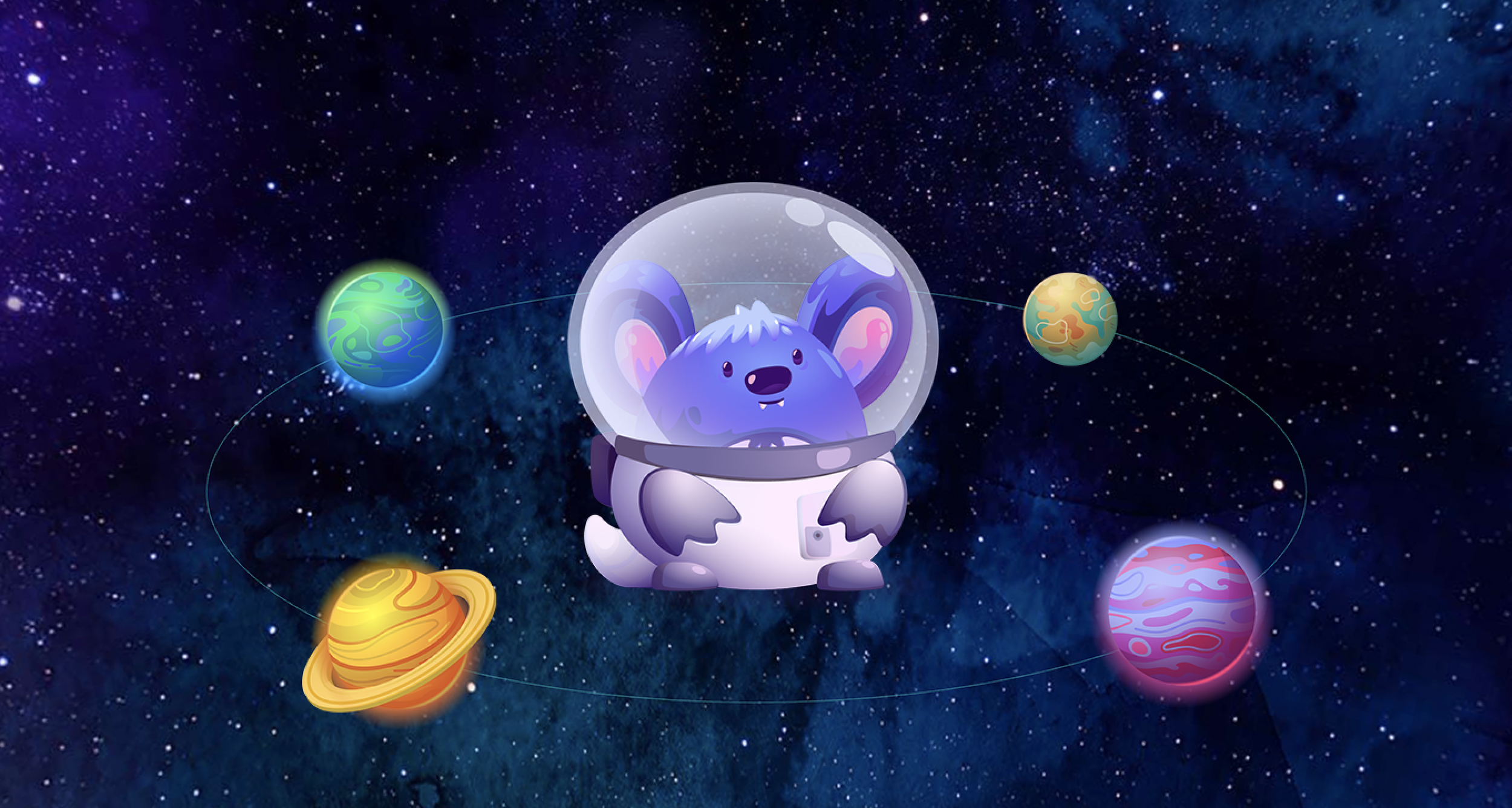Search for Exoplanets with the NOVA Exoplanet Lab
You've been selected to be the lead scientist for the NOVA Space Center’s Galactic Resettlement team, with the job of finding suitable exoplanets for displaced aliens desperately seeking new homes. Are you up to the challenge?

In the NOVA Exoplanet Lab, you'll meet a variety of alien creatures that need your help in finding a new planet to call home.
Are we alone? It’s one of those tantalizing mysteries we can’t help but ponder. Earth is teeming with life, including humans intelligent enough to ask such questions. But it seems to be the exception in our cosmic neighborhood, the solar system. Sure, scientists are searching for microbial life on Mars, in the salty liquid water oceans beneath the icy crust of Saturn’s moon Enceladus, and now in the clouds of Venus. But when it comes to intelligent life, the odds of finding it close to home seem pretty slim.
Does that mean there’s no chance we’ll ever find aliens to exchange recipes or swap stories with? Not necessarily – we just might need to look a little farther out. And that’s exactly what scientists have been doing for decades: searching for exoplanets, worlds orbiting faraway stars. They’ve had tremendous success: So far, NASA’s official count of these alien worlds is well over 4,000, with more than 5,000 more candidates waiting to be analyzed and possibly added to the list. While most of them are very different from Earth and unlikely to be hospitable to creatures anything like us, many others could very well be conducive to life as we know it.
And this is just the start. The story of how we’ve accomplished this feat is pretty amazing, a tale of thousands of scientists and engineers working together across a wide range of disciplines for decades. In our latest NOVA Lab we’ve created a game that invites students to join in the fun, and trains them to use the very same techniques that scientists use every day in the hunt for exoplanets. Here’s a quick preview:
To start, players watch a brief Mission Intro video that sets the scene for the game: They’ve been selected to be the lead scientist for the NOVA Space Center’s Galactic Resettlement team, with the job of finding suitable exoplanets for displaced aliens desperately seeking new homes.
Now players are ready for Mission 1, where they meet a representative of the Plantae, sentient photosynthetic creatures looking for a new, CO2-rich world to call home. To help them, players must work through a series of steps modeled on the work of real-word scientists:
Step 1
After learning about the different methods used to find exoplanets, players use the transit method to identify stars that seem to have planets orbiting them. This method allows them to calculate each planet’s volume, based on how much of the star’s light it blocks from reaching our telescopes when crossing in front.
Step 2
Next, players use the radial velocity method to measure how much the planets are tugging gravitationally on their stars, causing them to wobble. This gives an estimation of their mass, which, combined with the volume derived from the transit method, allows the player to calculate each planet’s density. Less dense planets are likely to be gas giants, while denser planets tend to have rocky surfaces
Step 3
The third step is to identify the atmospheric composition of each planet they’ve discovered by analyzing the unique absorption spectrum of the star’s light after passing through it. Knowing what molecules are present can tell us how many heat-absorbing greenhouse gases are present – another clue to the planet’s temperature – and whether there are any biosignature gases which might indicate whether life is already there.
Step 4
The final step is to put all this information together by placing Habi-tags on each planet that summarize its likely conditions. Now they’re ready to make a decision about where to send the Plantae, who will report back on how they fare once they arrive at their new home.

The Plantae, Cala Mari, and Daysiders are just a few of the aliens you'll be helping to relocate.
Once they’ve sent the Plantae on their way, players are ready to apply the same tools and techniques to relocate other alien friends, ones with needs very different from the Plantae. In Mission 2, the clients are Daysiders and Nightsiders, aliens who share a tidally-locked planet – a world where one side always faces its star, while the other always faces away, towards darkness. In Mission 3, Earth’s cats are seeking another Earth-like planet they can dominate, one without annoying humans and dogs. Players having too much fun to stop can work their way through two more Bonus Missions, featuring the Cala Mari, squid-like creatures looking for a water world, the Flatuencie, whose manta ray-like bodies are adapted to flying through the atmospheres of gaseous “Hot Jupiters,” and the sloth-like Li Chen who need a planet with very little oxygen in its atmosphere.
The Exoplanet Lab is part of the NSF-funded WHIMC project (What-If Hypothetical Implementations in Minecraft), based at the University of Illinois at Urbana-Champaign. WHIMC uses Minecraft as a creative sandbox where kids can explore alternative versions of Earth – like “What if Earth had no Moon?” – allowing researchers to study how “What If?” hypothetical scenarios might trigger engagement and learning in STEM. Exoplanets provide another fantastic playground for this kind of creative learning, a chance for students not just to ponder what alien worlds and their inhabitants might be like, but to use proven scientific methods to find answers.



